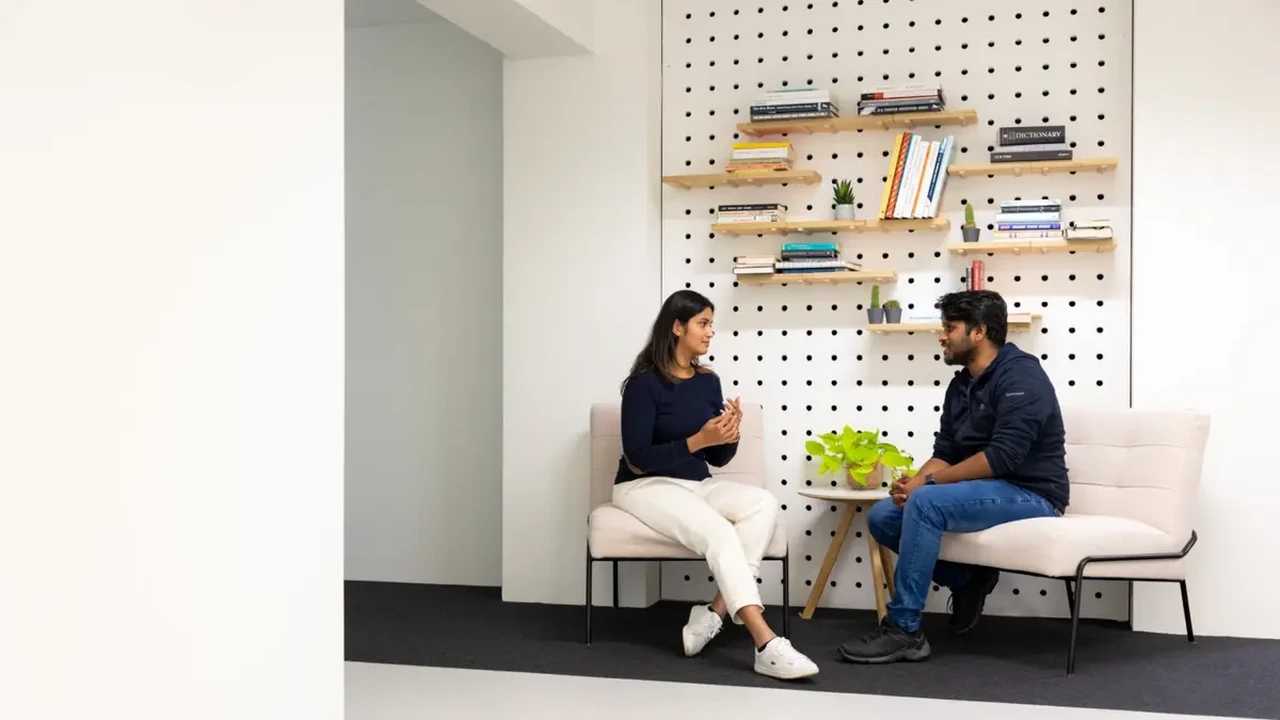5 Key Trends Shaping the Future of Retail
Identify the 5 most significant trends that are reshaping the retail industry and how businesses can adapt for future success.

5 Key Trends Shaping the Future of Retail
Hey there, fellow entrepreneurs and small business owners! The retail world is always on the move, and if you're not keeping up, you're falling behind. We're talking about a massive shift in how people shop, what they expect, and how businesses need to operate to stay relevant. This isn't just about online vs. brick-and-mortar anymore; it's a whole new ballgame. Let's dive into the five most significant trends that are reshaping the retail industry and, more importantly, how your business can adapt and thrive in this exciting future.
Trend 1 The Rise of Experiential Retail and Immersive Shopping
Remember when shopping was just about buying stuff? Well, those days are largely over. Today's consumers, especially the younger generations, are looking for more than just a transaction; they want an experience. This is where experiential retail comes in, transforming stores into destinations that offer entertainment, education, and engagement alongside products.
What is Experiential Retail and Why Does it Matter for Your Business
Experiential retail is all about creating memorable moments for your customers. Think about it: why do people go to an Apple Store when they can buy an iPhone online? It's the hands-on experience, the workshops, the Genius Bar support. For small businesses, this means getting creative. Can you offer workshops related to your products? Host events? Create Instagrammable moments in your store? The goal is to make your customers feel something, not just buy something.
Examples of Successful Experiential Retail Strategies
- Lululemon: Beyond selling activewear, Lululemon stores often host free yoga classes and community events, fostering a lifestyle around their brand.
- Sephora: Their beauty studios offer makeup tutorials, personalized consultations, and virtual try-on experiences, making beauty shopping interactive and fun.
- Story (now part of Macy's): This New York City store completely reinvents itself every few months with a new theme, products, and events, offering a fresh experience with each visit.
How Small Businesses Can Implement Experiential Retail on a Budget
You don't need a massive budget to create experiences. Here are some ideas:
- Host local artist showcases or pop-ups: Partner with local talent to bring new energy and customers to your space.
- Offer product demonstrations or DIY workshops: If you sell craft supplies, host a crafting class. If you sell coffee, offer a barista workshop.
- Create a unique in-store ambiance: Think about lighting, music, and even scent. Make your store a pleasant place to hang out.
- Personalized consultations: Offer one-on-one advice or styling sessions.
Trend 2 The Omnichannel Imperative Seamless Customer Journeys
Customers today don't just shop online or in-store; they do both, often simultaneously. They might browse on their phone, add items to a cart, then visit your physical store to see the product in person, and finally complete the purchase online later. This is where omnichannel retail becomes crucial. It's about providing a consistent and seamless customer experience across all touchpoints, whether it's your website, social media, physical store, or customer service.
Understanding Omnichannel vs Multichannel Retail for Your Business
While multichannel means having multiple channels (like a website and a physical store), omnichannel takes it a step further. It ensures these channels are integrated and work together to create a unified customer journey. For example, a customer should be able to check in-store inventory online, buy online and pick up in-store (BOPIS), or return an online purchase at your physical location.
Key Components of an Effective Omnichannel Strategy
- Unified customer data: Knowing your customer's preferences and purchase history across all channels.
- Consistent branding and messaging: Your brand voice and visual identity should be the same everywhere.
- Seamless inventory management: Real-time inventory updates across all sales channels.
- Flexible fulfillment options: Offering options like BOPIS, ship-from-store, or local delivery.
Recommended Omnichannel Tools and Platforms for Small Businesses
Implementing omnichannel can seem daunting, but several platforms can help. Here are a few to consider:
Shopify Plus
Description: While standard Shopify is great for e-commerce, Shopify Plus is designed for larger businesses or those with complex omnichannel needs. It offers advanced features for inventory management, multi-channel selling, and custom integrations. It's a robust platform that can handle significant scale.
Use Case: Ideal for small businesses that are rapidly growing and need a scalable solution to manage both online and physical store sales, inventory, and customer data in a unified system. It's particularly strong for businesses with multiple retail locations or a high volume of online sales.
Comparison: More expensive than standard Shopify but offers significantly more power and customization. It integrates well with various POS systems and marketing tools, making it a central hub for your retail operations.
Estimated Pricing: Starts at around $2,000 per month, but can vary significantly based on usage and specific needs. It's an enterprise-level solution, so it's a bigger investment.
Lightspeed Retail POS
Description: Lightspeed is a cloud-based point-of-sale (POS) system that's built with omnichannel in mind. It integrates your in-store sales, inventory, and customer data with your online store. It's known for its robust inventory management features, reporting, and ease of use for various retail sectors, including fashion, electronics, and restaurants.
Use Case: Excellent for small to medium-sized businesses with a physical storefront and an online presence. It allows you to manage all your products, sales, and customer information from a single platform, making it easy to offer services like BOPIS or in-store returns for online purchases.
Comparison: Stronger POS capabilities than many e-commerce-first platforms, making it a good choice if your physical store is a significant part of your business. It offers more specialized retail features compared to general e-commerce platforms.
Estimated Pricing: Plans start from around $69 per month (billed annually) for the basic POS, with e-commerce integration and advanced features increasing the cost. They offer different tiers based on your business size and needs.
Square for Retail
Description: Square is well-known for its payment processing, but Square for Retail is a comprehensive POS system designed specifically for retail businesses. It combines payment processing, inventory management, customer relationship management (CRM), and an integrated online store. It's user-friendly and great for businesses just starting their omnichannel journey.
Use Case: Perfect for small businesses and startups looking for an all-in-one solution that's easy to set up and manage. If you're looking to seamlessly connect your physical store with a simple online store and manage everything from one dashboard, Square for Retail is a strong contender.
Comparison: Very accessible pricing and ease of use make it a popular choice for smaller operations. While it might not have the deep customization of Shopify Plus or the industry-specific features of Lightspeed, its simplicity and integrated payment processing are huge advantages.
Estimated Pricing: Free for basic processing, with paid plans for Square for Retail starting at $0 per month (plus processing fees) for the basic plan, and $60 per month per location for the Plus plan, offering more advanced features.
BigCommerce
Description: BigCommerce is a leading e-commerce platform that also offers strong omnichannel capabilities. It integrates with various POS systems (like Square, Lightspeed, and others) and marketplaces (Amazon, eBay, social media) to help you sell everywhere. It's known for its robust SEO features and scalability.
Use Case: Ideal for small to medium-sized businesses that have a strong online focus but also want to expand into physical retail or other sales channels. If you're looking for a powerful e-commerce engine that can connect to your physical store, BigCommerce is a great option.
Comparison: Offers more built-in features than standard Shopify without needing as many apps, which can sometimes save on costs. It's highly scalable and can support businesses as they grow from small to enterprise level.
Estimated Pricing: Plans start from $29.95 per month for the Standard plan, with higher tiers offering more features and lower transaction fees. The cost scales with your sales volume.
Trend 3 Personalization at Scale Tailoring the Shopping Experience
In a world saturated with choices, generic marketing just doesn't cut it anymore. Consumers expect personalized experiences, from product recommendations to tailored promotions and even customized in-store interactions. This trend is about using data to understand individual customer preferences and delivering relevant content and offers at every touchpoint.
The Power of Data Driven Personalization for Customer Loyalty
Personalization isn't just a nice-to-have; it's a powerful tool for building customer loyalty and driving sales. When customers feel understood and valued, they're more likely to return and recommend your business. This means collecting data (ethically and transparently, of course!) on their browsing habits, purchase history, and preferences.
Strategies for Implementing Personalized Marketing and Product Recommendations
- Email marketing segmentation: Send targeted emails based on past purchases, browsing behavior, or demographic information.
- Website personalization: Show different product recommendations or content to visitors based on their previous interactions with your site.
- Loyalty programs: Offer exclusive rewards and personalized discounts to your most loyal customers.
- In-store personalization: Train your staff to remember customer preferences or use technology to assist with personalized recommendations.
Tools for Personalization and Customer Relationship Management CRM
To effectively personalize, you'll need good CRM and marketing automation tools. Here are some popular choices:
Klaviyo
Description: Klaviyo is a powerful email and SMS marketing platform specifically designed for e-commerce businesses. It excels at segmentation, automation, and personalization, allowing you to send highly targeted messages based on customer behavior, purchase history, and website activity. It integrates seamlessly with platforms like Shopify and BigCommerce.
Use Case: Perfect for small to medium-sized e-commerce businesses that want to move beyond basic email blasts and implement sophisticated, personalized marketing campaigns. It's excellent for abandoned cart recovery, post-purchase flows, and segmenting customers for specific promotions.
Comparison: More e-commerce focused and generally more powerful for automation and segmentation than general email marketing tools like Mailchimp. It provides deep insights into customer behavior, allowing for highly effective personalization.
Estimated Pricing: Free for up to 250 contacts and 500 email sends. Paid plans scale with the number of contacts and email/SMS sends, starting from around $20 per month for 500 contacts.
ActiveCampaign
Description: ActiveCampaign is an all-in-one marketing automation, email marketing, and CRM platform. It offers advanced automation capabilities, allowing you to create complex customer journeys based on a wide range of triggers and conditions. It's highly flexible and can be adapted to various business types, not just e-commerce.
Use Case: Great for small businesses that need robust marketing automation and CRM features to nurture leads, manage customer relationships, and deliver personalized experiences across different channels. It's particularly useful if you have a longer sales cycle or offer services in addition to products.
Comparison: Offers a more comprehensive suite of features than many dedicated email marketing platforms, including a built-in CRM. Its automation capabilities are among the best in its class, allowing for highly customized customer interactions.
Estimated Pricing: Plans start from $29 per month (billed annually) for the Lite plan, with higher tiers offering more features like CRM and lead scoring. Pricing scales with the number of contacts.
HubSpot CRM Free
Description: HubSpot offers a powerful free CRM that allows you to manage your contacts, track customer interactions, and organize your sales pipeline. While their paid marketing and sales hubs offer more advanced personalization features, the free CRM is an excellent starting point for any small business looking to centralize customer data.
Use Case: Ideal for small businesses and startups that need a robust system to manage customer relationships without a significant upfront investment. It's great for keeping track of leads, customer communications, and understanding your customer base better, which is foundational for personalization.
Comparison: One of the most comprehensive free CRM solutions available. While it doesn't offer the deep e-commerce automation of Klaviyo or the extensive automation of ActiveCampaign in its free tier, it's an invaluable tool for organizing customer data and sales activities.
Estimated Pricing: Free for the basic CRM. Paid plans for their Marketing Hub, Sales Hub, and Service Hub start from around $45 per month each, offering advanced personalization, automation, and reporting features.
Trend 4 Sustainability and Ethical Consumption Driving Consumer Choices
Consumers are increasingly conscious of the environmental and social impact of their purchases. This isn't just a niche market anymore; it's a mainstream expectation. Businesses that prioritize sustainability, ethical sourcing, and transparency are gaining a significant competitive advantage.
The Growing Importance of Sustainable Business Practices for Retailers
From reducing waste and using eco-friendly packaging to sourcing materials responsibly and ensuring fair labor practices, sustainability encompasses a wide range of actions. It's not just about being 'green'; it's about building a business that is socially responsible and transparent about its practices. This resonates deeply with modern consumers, especially Gen Z and Millennials.
Strategies for Incorporating Sustainability into Your Retail Business
- Eco-friendly packaging: Switch to recyclable, compostable, or reusable packaging materials.
- Ethical sourcing: Partner with suppliers who adhere to fair labor practices and sustainable production methods.
- Reduce waste: Implement recycling programs, minimize single-use plastics, and consider offering repair services.
- Transparency: Be open about your supply chain and sustainability efforts. Share your story with your customers.
- Offer sustainable product lines: Curate products that are organic, fair trade, locally made, or have a low environmental footprint.
Certifications and Resources for Sustainable Retail Practices
Look into certifications like B Corp, Fair Trade, or USDA Organic to validate your sustainability claims. Organizations like the Sustainable Retail Summit or local business associations can also provide valuable resources and guidance.
Trend 5 The Blurring Lines Between Physical and Digital Retail Phygital
We've talked about omnichannel, but 'phygital' takes it a step further. It's about creating a truly integrated experience where the physical and digital worlds seamlessly merge. Think about augmented reality (AR) try-ons in-store, smart mirrors, or using your phone to interact with products on shelves. It's about leveraging technology to enhance the in-store experience and bring the convenience of online shopping into the physical space.
What is Phygital Retail and How Does it Enhance Customer Engagement
Phygital retail aims to combine the best of both worlds: the tactile experience and immediate gratification of physical stores with the data-driven insights and convenience of digital channels. It enhances engagement by making shopping more interactive, personalized, and efficient.
Examples of Phygital Innovations in Retail
- Amazon Go stores: No cashiers, just grab and go, with payment handled digitally.
- Nike Rise stores: Use a mobile app to scan products for more information, check inventory, or send items to a fitting room.
- Warby Parker: Their app allows you to virtually try on glasses, and their stores offer eye exams and personalized styling.
Accessible Phygital Solutions for Small Businesses
While some phygital solutions are high-tech and expensive, small businesses can start with simpler implementations:
- QR codes: Use QR codes in-store to link to product information, customer reviews, or your online store.
- Interactive displays: A tablet or screen in-store where customers can browse your full catalog, customize products, or sign up for your newsletter.
- Click and Collect (BOPIS): Allow customers to order online and pick up in-store, combining digital convenience with a physical touchpoint.
- Virtual try-on apps: If applicable to your products (e.g., eyewear, makeup), explore affordable AR apps that allow customers to virtually try on items.
The retail landscape is constantly evolving, but by understanding and adapting to these five key trends – experiential retail, omnichannel, personalization, sustainability, and phygital experiences – your small business can not only survive but truly thrive. It's about being agile, customer-centric, and willing to embrace new technologies and approaches. So, go out there and make your mark!
:max_bytes(150000):strip_icc()/277019-baked-pork-chops-with-cream-of-mushroom-soup-DDMFS-beauty-4x3-BG-7505-5762b731cf30447d9cbbbbbf387beafa.jpg)






